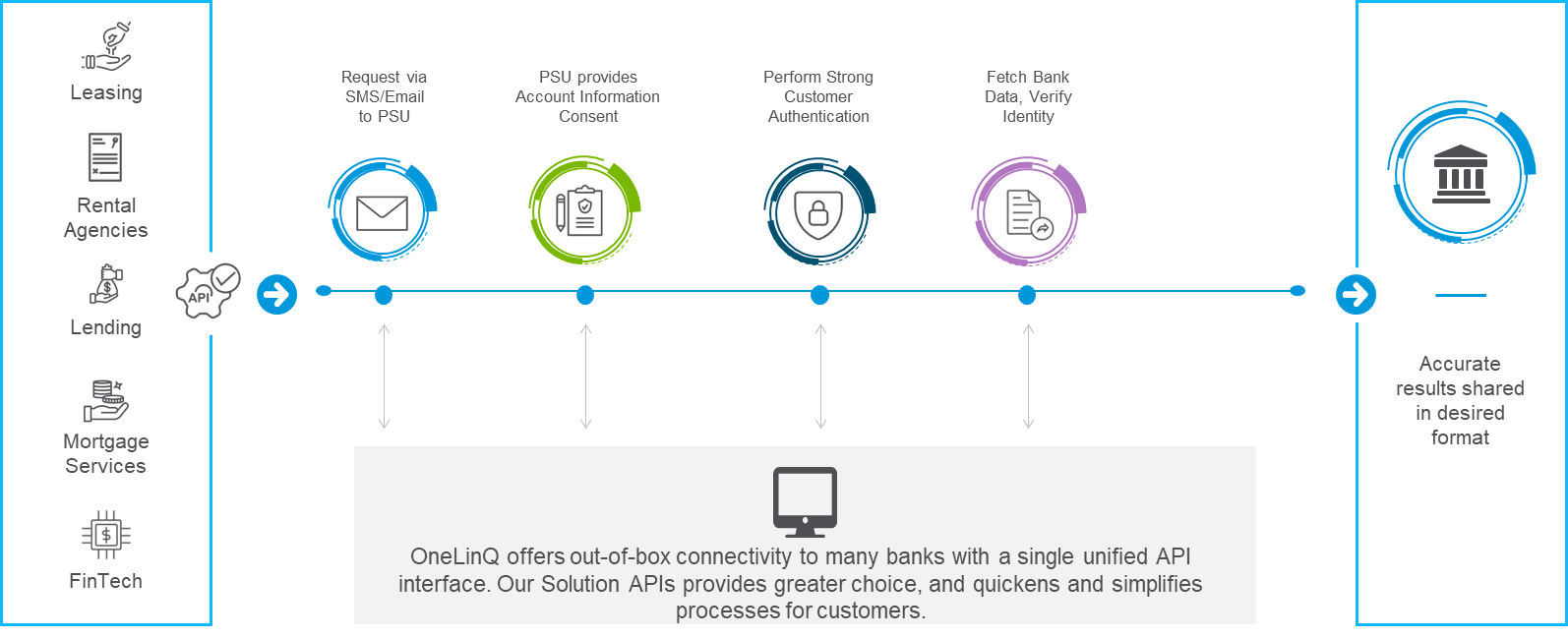Account Holder Verification
Summary
OneLinQ’s Account Holder Verification API enables Partners to verify the customer’s (end-user) identity by fetching the customer's bank data in real-time. It accelerates AML checks, seamless KYC process automation, and consumer onboarding. It also facilitates Confirmation of Payee, which drastically reduces transaction failure.
Key Features
1. Real-time verification
2. Accurate Name Matching
3. Compliance with regulations
4. REST API Integration
5. White Labelling support
6. Multilanguage support
Account Holder Verification APIs
API Name | API Endpoint | API Description |
Check the Availability Of Services | GET /health-check | An API to check the availability of services. |
Account Holder Verification | POST /account-holder-verification | Account Holder Verification request API. |
Get Verification PDF Report (In the future) | GET /report/{reportId} | An API for obtaining the verification PDF report using the report ID. |
Account Holder Verification Flow Diagram

Account Holder Verification Steps
Step 1: Account Holder Verification Request
Partner / Customer sends the Account Holder Validation request. Post authentication the request will be accepted in OneLinQ.
In case the flow type is REDIRECT, the end user will be redirected to the Hosted Verification Page to review Account details.
In case the flow type is REQUEST, OneLinQ will send the Account Holder Verification Link via the preferred mode (Email/SMS). The end user will be redirected to the Account Verification Consent Page to review Account details.
The Partner/Customer receives a report ID (in the future), a redirection URL, the status of the request, and a verification ID (via Inline API response/Email/SMS).
Step 2: AIS Consent
On the Account Holder Verification Consent Page, the end user provides the AIS consent to OneLinQ.
Step 3: Authorize AIS Consent
The end user will securely authorize the consent using the Strong Customer Authentication Method. (OneLinQ supports SCA through Authentication Embedded, Re-direct, and De-coupled.)
Step 4: Fetch Account Details
On successful consent authorization, OneLinQ consumes the PSD2 or Open Banking API of the bank and asks for the Account Details. The Account Details fetched from the bank will be used to validate the Account Number, the Account Holder's name, and whether the account is active.
Step 5: Account Holder Verification Status
The matching of the Account Number and Account Name with the other information sent in the request is done with the Account details fetched. Post matching, the validation status will be sent to the Partner/Customer.
Step 6: Retrieve the Validation Report (in the future)
The response from this API will provide the PDF report for the Account Holder Verification.
If the Account Holder Verification is successful, the report will include the verification status, as well as the requested bank account details and the account details retrieved from the bank.
However, if the Account Holder Verification fails, the report will include the status along with the requested bank account details.
